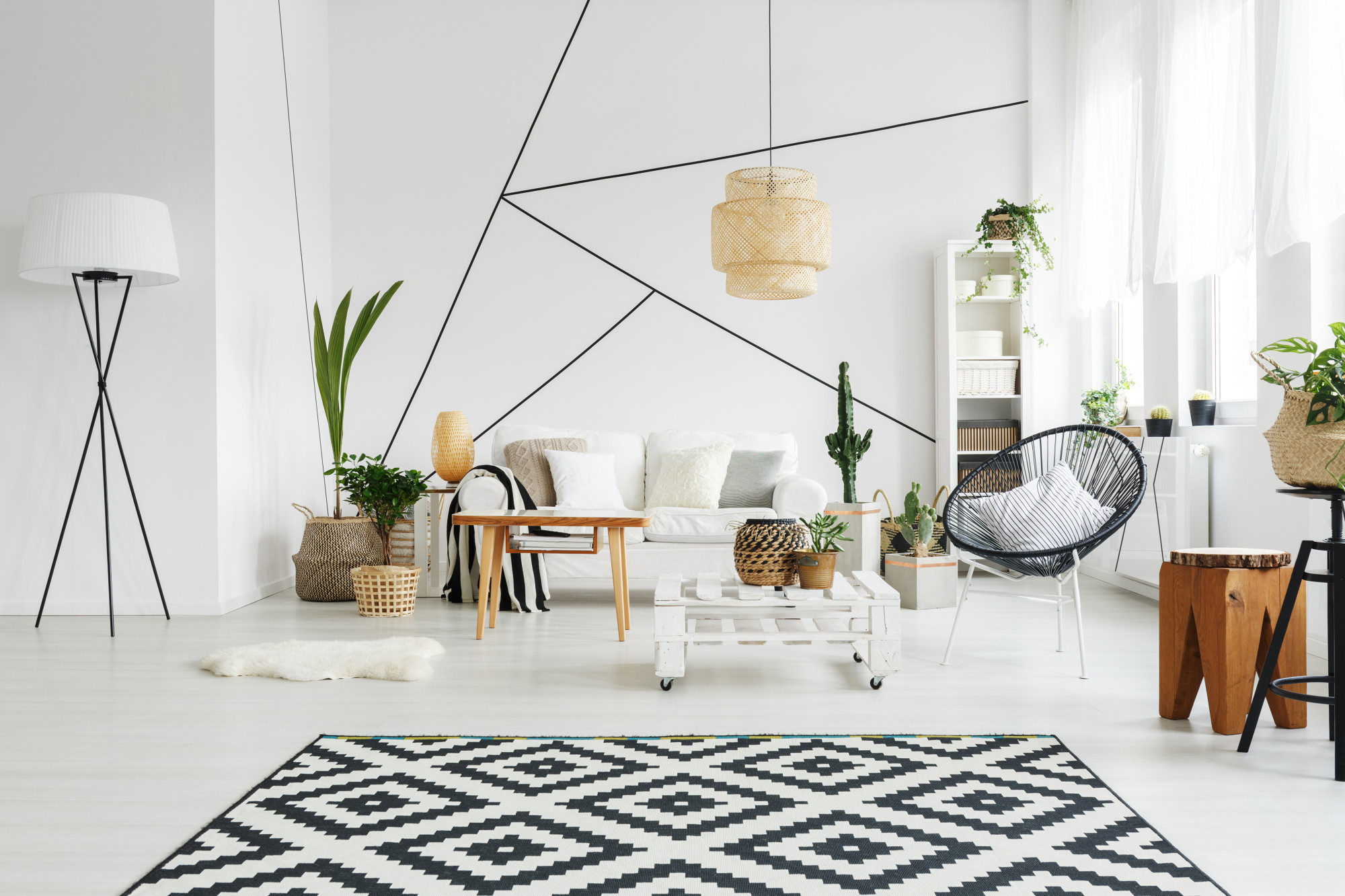Table Of Content

"Japandi" has become the denomination for interiors where Japanese minimalism meets Scandinavian functionality. Simple, pared-back designs and natural materials are some of the key characteristics of the style. Early traces of this design style can be seen in ceramic crafts, architecture, and Danish furniture. It is true that both design philosophies—Wabi-Sabi from Japan and the Hygge from Denmark appreciate simplicity, minimalism and natural materials, so it was only a matter of time before the two were mixed together in design. The prevalence of natural materials and simple designs makes it a great green decor style. With more and more consumers looking toward eco-friendly aesthetics, Japandi's popularity is no surprise.
What is the meaning of Japandi?
Both the interior and exterior of this Japandi tiny home feature contrasting shades of black and natural wood tones, which homeowner Stephen Proctor first imagined after picking up a Theo coffee mug and teapot by the brand Stelton. The matte-black ceramic base and simple bamboo handle and lid inspired him to mimic the combination throughout the tiny home. The Summer House in the Stockholm archipelago, designed by Kod Arkitekter, emphasizes a strong connection with the forested surroundings and exceptional sea views beyond. The architects achieved this by combining a Scandinavian cottage vernacular with a simplicity inspired by Japanese design. In California’s idyllic Sea Ranch community, a vacation home by Malcolm Davis Architecture privileges views of the Pacific Ocean and fog-shrouded trees. The bright and airy interiors, following a crisp, Scandinavian aesthetic, are pared back to retain focus on the spectacular surroundings.
Here’s a list of Japandi furniture pieces and links to my posts and ideas for each one:
Overall, Japandi style offers a range of benefits that make it a compelling choice for anyone seeking to create serene, timeless, and functional interiors that promote well-being and harmony in the home. Natural light and uncluttered spaces are common in both Japanese and Scandinavian design, making the pairing that much more natural. Pan-Projects and Mok Architects combined Nordish and Japanese aesthetics to design Izumi in Copenhagen. The Japanese restaurant features interiors typically seen in Japanese restaurants such as translucent doors, as well as Nordish design such as the generous use of oak. Designed by Norm Architects, Archipelago Home is a holiday home that embodies both Scandinavian and Japanese design philosophies.
What Is Rendering in Interior Design?
The essence of Japandi lies in its sleek minimalism, warm neutral color palettes, and nature-infused elements. The minimalist styles and natural materials used in both Japan and Scandinavia come together in this lookbook, containing 10 living rooms that have been decorated with Japandi interior design. For example, you may choose to incorporate a darker colour palette full of stones and dark wood to embrace a bit more of the Japanese style, or go lighter if you want more of a Scandinavian flare. When combined as Japandi, these complementary ideologies promote domestic comfort, natural imperfection, and practical simplicity. These concepts extend beyond just Japandi furniture and decor, to an intersection in two ways of life. “The historical connection adds a rich depth of meaning to the style, highlighting the enduring impact of cross-cultural inspiration in the world of interior design,” Snisar says.
What Does Japandi Mean?
Wabi-sabi can be understood as a part of Japandi interiors, but also its own unique doctrine. I love clever storage solutions, multi-purpose furniture, and well-designed layouts to make the most of every square inch and create a practical living environment to help you relax in your home. And Scandinavian design has a focus on functionality, cozy textures, and light, airy spaces – it’s been a staple in the design world for decades. Since the past decade, the definition of luxury has moved away from being ostentation and gaudy to being pared back and subtle...a refined aesthetic that speaks more about quality and materials. In the primary bathroom (pictured above), Verruto carefully blended warm and cool tones to create an environment of balance and serenity.
Sail Away in Style: Design Trends for Decorating Your Yacht's Living Spaces
The exterior features an entranceway of oak blackened in the traditional Japanese method known as shou sugi ban. A triangular white lamp and small sculptural side table are a fun addition to the room, which also features a weathered wooden floor and walls where the peeling paint has become a decorative feature in itself. Artworks decorate the walls and the room's fireplace has been painted black, matching the graphic slender black floor lamps. The wooden floor has been left mostly bare, with just a small grey rug for decoration.
What are the rules of Japandi style?
‘Japandi’: Why Japanese-meets-Scandi design is taking over the internet - CNN
‘Japandi’: Why Japanese-meets-Scandi design is taking over the internet.
Posted: Tue, 15 Nov 2022 08:00:00 GMT [source]
Mid-century design and American crafts also feature in the house, balancing out the Japanese minimalism. An exhibition by Japanese furniture producer Ariake at Stockholm Design Week showcased the label's wooden furniture, which was designed in collaboration with a number of designers from all over the world (above and top). This Dezeen Lookbook presents seven interiors that combine design influences from Japan and Scandinavia in a style that has become known as "Japandi". Because Japandi design is focused on craftsmanship, it's not meant to be throwaway.
Are there any Interior Design colleges in Curitiba?
While a spare space can sometimes be cold, Japandi style gets around that with light and soft textures. "Utilizing natural light, soft textiles in muted tones, and an overall neutral color palette, our goal is to create an inviting atmosphere that strikes a perfect balance between minimalism and comfort," says Vergara. If you’re interested in bringing the Japandi interior design trend into your home, Rietbergen says it’s best to start by decluttering, as an emphasis on minimalism and a less-is-more mindset is particularly important in Japandi style. After that, she says it’s up to the person regarding how much of each individual style gets included in the final look. “You can choose if you like your place a bit more Scandinavian or Japanese,” she says.
Welcome to timeless eleganceOur home is our sanctuary, where every piece of furniture isn't just a functional object but a treasured chapter in our story. At Scandinavian Designs Furniture I Dania Furniture, inspired by the serene beauty of Scandinavian design and the sophistication of European craft, we've curated a collection that promises not just a house, but a heartwarming home. Our pieces are carefully crafted, inviting comfort and conversation, turning the ordinary into extraordinary. They say "modern" is the harmony between elegance and efficiency, and we take pride in offering you precisely that balance. We invite you to shop our collated selection—where every chair, table, and decor piece holds the potential for a story—as you craft and curate your personal getaway.
Seven Japandi projects that blend Japanese and Scandinavian design - Dezeen
Seven Japandi projects that blend Japanese and Scandinavian design.
Posted: Sat, 30 Jan 2021 08:00:00 GMT [source]
One of the main tenets is a focus on beautiful, practical designs that are as aesthetically pleasing as they are functional. "We strongly believe quality and easy living will affect people in a positive way," explains architect Johan Tran, who renovated a compact apartment in Oslo with these principles in mind. "Owning less leads to having more time and focusing on the important things in life." A British take on Japandi interior design can be seen in this living room in an apartment in Edinburgh. Simple and functional, the design nonetheless feels interesting because of the small touches, such as the dark-wood foldable side table and the classic rice lamp. Harper believes we'll continue to see Japandi style manifest in limewash wall finishes and rich midtone woods that bring a sense of calm and ease to everyday living.
In this guide, we will unravel the essence of this captivating trend, exploring its core principles, key elements, and practical application in interior design. With a focus on simplicity, functionality, and the celebration of natural materials, Japandi style transcends mere aesthetics to become a way of life. Whether you're drawn to its clean lines, its emphasis on craftsmanship, or its embrace of imperfection, Japandi offers a sanctuary from the chaos of modern living, inviting you to create a space that nourishes both the body and the soul.

Japandi gardens and outdoor spaces for me need to focus on the integration of nature and design. I try to create a cozy and inviting space by using soft textiles, warm lighting, and practical storage solutions. Japandi believes that life’s impermanent nature should be celebrated, and Japandi design incorporates this with handcrafted items, and pieces that show signs of wear, fostering a sense of authenticity and a ‘lived-in’, homely feeling which I love.
"As far as furniture, Japandi traditionally includes functional pieces with clean details." But just when it seems there’s nothing new under the sun, as the proverb goes, an ethereal blend of East meets West sweeps across social media feeds. The new aesthetic fuses the zen of Japanese design with the cozy simplicity of Scandinavian décor—the result is called Japandi style. By incorporating these principles and elements into your design, you can create beautiful and harmonious spaces inspired by the timeless elegance of Japandi style. Co-designed by Keiji Ashizawa Design in collaboration with Danish firm Norm Architects, the hotel seamlessly blends with its green surroundings, while also combining the best of Japanese and Scandinavian design. A soothing palette of earthy tones and wood furniture anchor the decor – but to truly appreciate the way the building embraces the park, you have to head to the Trunk (Pool Club).












